As the world’s oldest and largest supplier of shafts and components for arrow building, there is perhaps no name more familiar in archery than Easton. Today, most people associate Easton with advanced carbon composite and aluminum-hybrid arrow shafts, but the company’s early roots were in the design and manufacture of exceptionally fine, handcrafted wood arrows and bows. The story of Easton spans a century — beginning with one man operating out of his garage, to today, with the development and supply of the world’s most advanced archery products.
The earliest manufacturing by Easton dates to 1922 with company founder James D. (Doug) Easton creating custom bows and cedar arrows in his garage in Watsonville, California. The story of Doug Easton’s passion for making fine archery tackle began years earlier, after numerous chance encounters that helped shape his life and what has today become Easton.
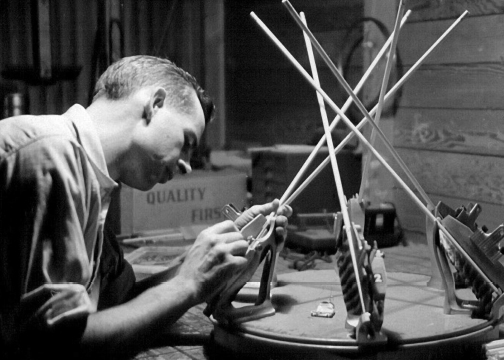
One of those encounters was with Dr. Saxton Pope, considered one of the pioneers of modern bowhunting, and whose name now resides on the bowhunting big game record keeping organization, Pope and Young. It was the same Dr. Pope who inspired a young Doug with praise for his self-made high-quality bows and arrows in a chance encounter of the two men at an archery range in California.
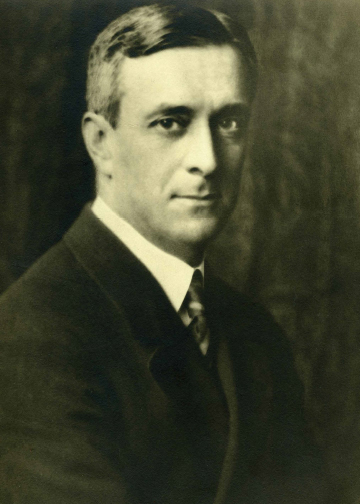
Energized by Saxton Pope’s personal accolades, Doug moved his workshop to a larger building in Los Angeles and began to offer his fine equipment for sale to the public. In his continuous quest for improvement, Doug grew frustrated by the lack of consistency and uniformity in wood arrows, so he began to experiment with other shaft materials. After extensive research and testing, the first Easton aluminum shafts were produced in 1939. Passionate about creating the perfect arrow, Doug had designed a product that met the demands of top target archers and a growing list of bowhunters. Tournament scores skyrocketed as did demand for the renowned accuracy found in the new Easton arrows. These innovative production techniques led to the first trademarked aluminum arrow, the 24SRT-X. Doug’s instincts about aluminum’s performance improvement proved correct when in 1941, a California archer won the National Championship with a set of Easton aluminum arrows.
In the 1950s, the demand for Easton shafts began to explode. Plant expansions were necessary in 1952 and again in 1957 when the factory reached 10,000 square feet. Soon, archers in the emerging sport of bowhunting caught wind of the performance of Easton arrows. Elite bowhunters like Howard Hill, Doug Walker and Fred Bear, were soon pioneering the way with the new aluminum shafts. With the ever-present quest to improve quality and durability, Doug developed the XX75 arrow in 1958. Cold-drawn from aircraft-grade 7075 alloy to unheard-of tolerances, and tempered to a cutting-edge T-9 rating, the Easton name was being applied to the strongest arrow shaft in its time. This new shaft was so popular that Easton soon made it available in 22 different sizes, ensuring that archers of every age and stature could use it.
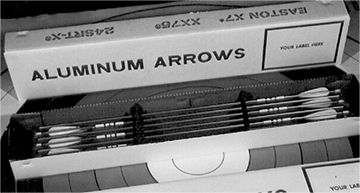
In 1960, Doug’s son, Jim Easton, joined the company. With Jim at his side, Doug continued to expand production and develop new products. When the pair weren’t out hunting or attending archery tournaments, they were researching ways to continually improve Easton shafts. By 1966, an even stronger shaft was ready for production — the X7 — and was introduced as the premier target archery shaft. With thousands of new archers and bowhunters entering the sport annually, demand for Easton arrow shafts grew. As the 1960s decade drew to a close, new facility was needed and was soon under construction in Van Nuys, California.
During this time of rapid growth and innovation, the Easton family could see the potential of archery as a developing sport, and they made promotion of the pastime a priority. Archery and bowhunting organizations soon came to depend on Easton’s strong support for tournaments and training equipment. Doug and Jim also worked hard to help bring archery back to the modern Olympic Games, a goal that was met in 1972. That same year marked the 50th anniversary of Easton as a company and on the last day of 1972, Doug Easton passed away. Doug had seen his company grow from one man in his garage to a 56,000-square-foot plant in Van Nuys with 120 employees. He lived to see archery at the Munich Games, the first time archery had been contested in the Olympics since the 1920s. The quest to pursue a life totally involved in archery — and to make significant contributions to a sport he had grown passionate about — had been met. Doug Easton had truly shaped the course of an industry and helped create millions of new archers and bowhunters with his consistent flying, affordable Easton arrow shafts.
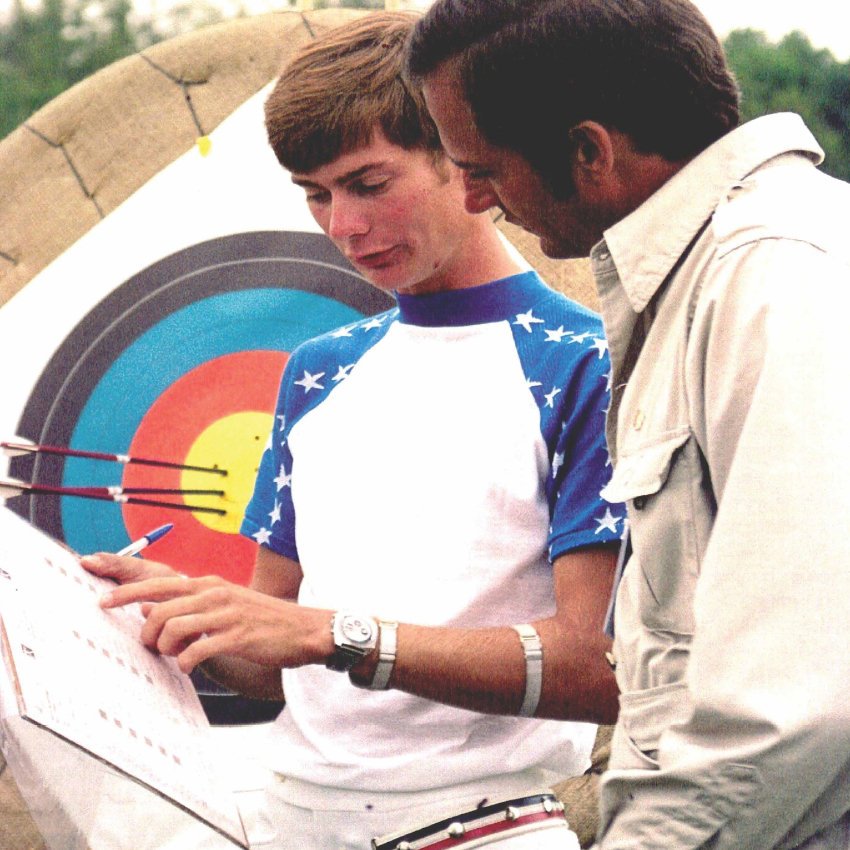
As 1973 began, Jim Easton took over as president, sharing the same passion for archery that a young Doug had exhibited. Under Jim’s leadership, the company began innovating to advance the technology in arrow shaft design and performance. Under his leadership, the company developed new products, new materials, and better production processes. The company’s developments with high performance aluminum tubing and carbon fiber led to new product categories for Easton. The Easton name soon became synonymous with exceptionally fine baseball and softball bats, aluminum hockey sticks, bike frame tubing, backpack tent tubes, and golf equipment. But, all the while, the family-owned company mission remained to make the best quality arrow shafts possible.

In mid-1980, Easton expanded its operations by building its current facility — a modern manufacturing plant in Salt Lake City, Utah. Now known as Easton Technical Products, the 100,000-square-foot Salt Lake City division is headquarters for all archery product engineering, manufacturing, marketing and distribution. Continually seeking to improve, Jim Easton introduced aluminum/carbon composite arrows in the early 1980s in Salt Lake. The concept was innovative: a thin-walled aluminum core tube wrapped with layers of lightweight, high-strength carbon fiber. This offered the performance-minded archer an astoundingly light, yet stiff and durable shaft. By 1984, these first “A/C” arrows were used by Olympic archers to capture gold and silver medals. A/C technology led to the Easton A/C/E, with its barreled profile and extreme accuracy, becoming the arrow of choice for Olympians and World Team archers from 1988 until the 1996 Olympic Games in Atlanta. Introduced at the 1996 Olympic Games, the Easton X10 represented an even more advanced evolution of aluminum/carbon technology, being used to win every Olympic Gold Medal in Atlanta, and every Olympic Games’ title since.
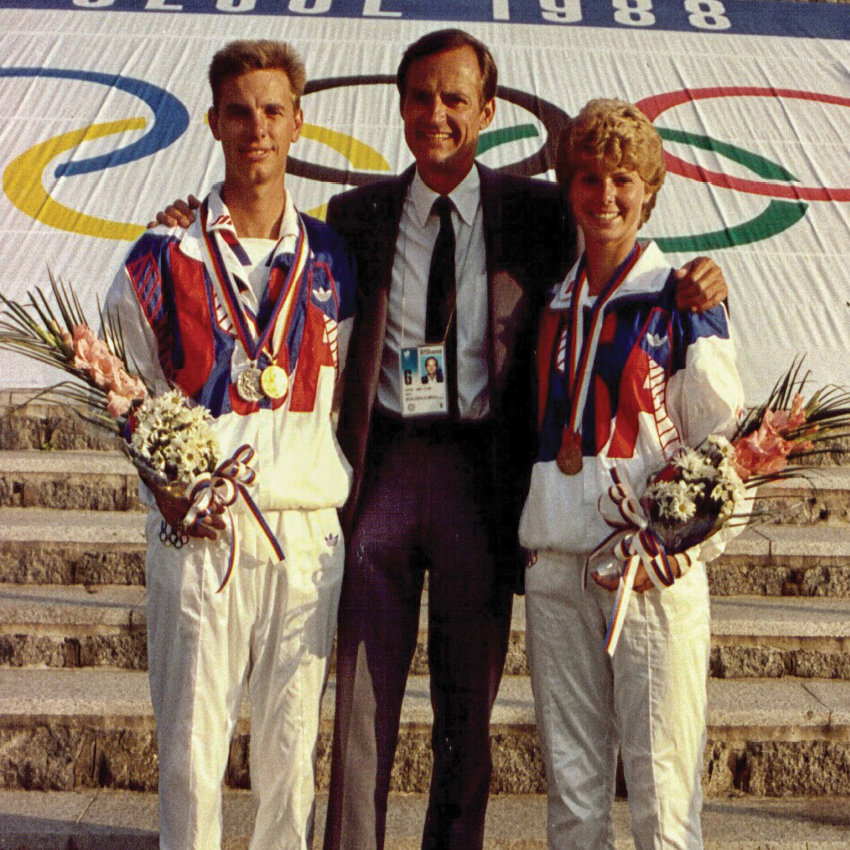
As Easton’s aluminum/carbon hybrid technology ushered in a new level of performance, Easton engineers continually sought to improve on the aluminum shafts as well. In 1991, the XX78 Super Slam was introduced on the heels of Chuck Adams’ achievement of being the first hunter to take every species of North American big game animals with a bow and arrow. New camouflage patterns and processes, new nock and point systems, and methods for drawing aluminum tubing to thinner wall swept the aluminum shaft category.
Easton’s long-standing expertise in aluminum and A/C arrow technology led directly to the next trend in arrow construction — all-carbon shafts. The all-carbon shaft has become the standard with bowhunters seeking strength, durability and increased speed. Easton was on the forefront of innovation of carbon construction with the best, most consistent carbon shafts on the market, with the tightest tolerances for both spine and weight consistency.
Greg Easton, the third generation in the Easton archery legacy, became president of Easton Technical Products in December 2001. Like his father and his grandfather before him, Greg combines a love of the sport of archery and bowhunting with the drive for innovation that keeps Easton on the cutting edge of arrow technology. Under Greg’s leadership, the Axis arrow rewrote the rules on all-carbon bowhunting shafts. With its innovative micro diameter and insert system, the birth of Axis came from Easton’s desire to create a hunting shaft with ultimate penetration and added energy. Axis arrows soon became the industry standard as the highest-performing arrows for serious bowhunting.

The overwhelming success of the all-carbon Axis spawned another Easton first — the Full Metal Jacket. Building on the revolutionary performance of aluminum/carbon hybrids developed years earlier, the FMJ was conceived with the small diameter benefits of a micro carbon Axis but adds the kinetic energy and precision of a metal jacket. The revolutionary FMJ design placed a cold-drawn 7075 aluminum jacket over the carbon core. This break-through design gave the bowhunter the benefits of aluminum/carbon (A/C) technology, including tighter straightness and weight tolerances, increased kinetic energy, and precise spine values, 360 degrees around the shaft. Easton followed the introduction of 5mm Axis and FMJ with even smaller diameter, higher-performing, 4mm ultra-micro hunting arrows — the 4mm FMJ and Axis. These ultra-micro shafts offer the ultimate option for bowhunters seeking maximum penetration for big game hunting.
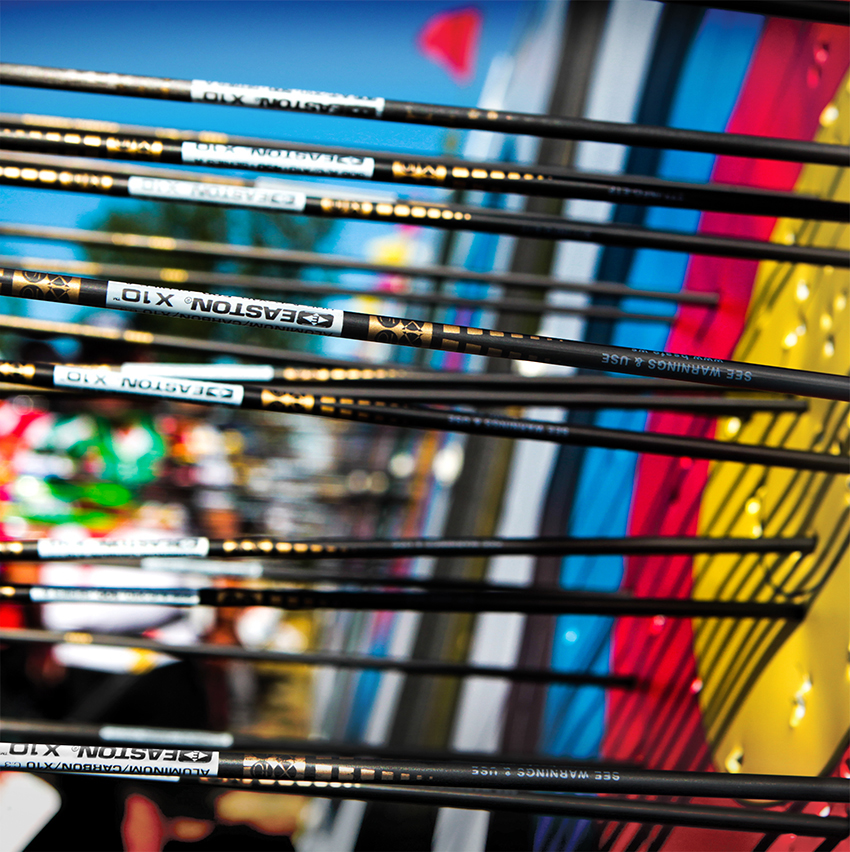
Although the technology, materials, and processes have changed, the same principles upon which the company was founded continue today. Easton remains a family-owned company manufacturing in the United States, with the same goals — to create the finest arrow shafts for any and all archers. It is important to note that while Easton has expanded into other industries, the company’s mission has always remained focused on creating the highest quality arrow shafts possible. Even as the company’s product lines diversified to include baseball and softball bats, aluminum hockey sticks, bike frame tubing, backpack tent tubes, and golf equipment, arrow shafts remain the cornerstone of the company’s success. This continued dedication to excellence has allowed Easton to remain at the forefront of the archery industry for over a century, and is a testament to the company’s commitment to its customers and their passion for the sport.
Just as more than 100 years ago, Doug Easton was influenced by Dr. Saxton Pope, who had in turn been inspired by the ancient sport, Easton continues to be fueled by the passion for archery innovation that results in the graceful, accurate flight of an arrow.
— PAID PARTNER CONTENT. This content is brought to you by a D&DH advertising sponsor.

